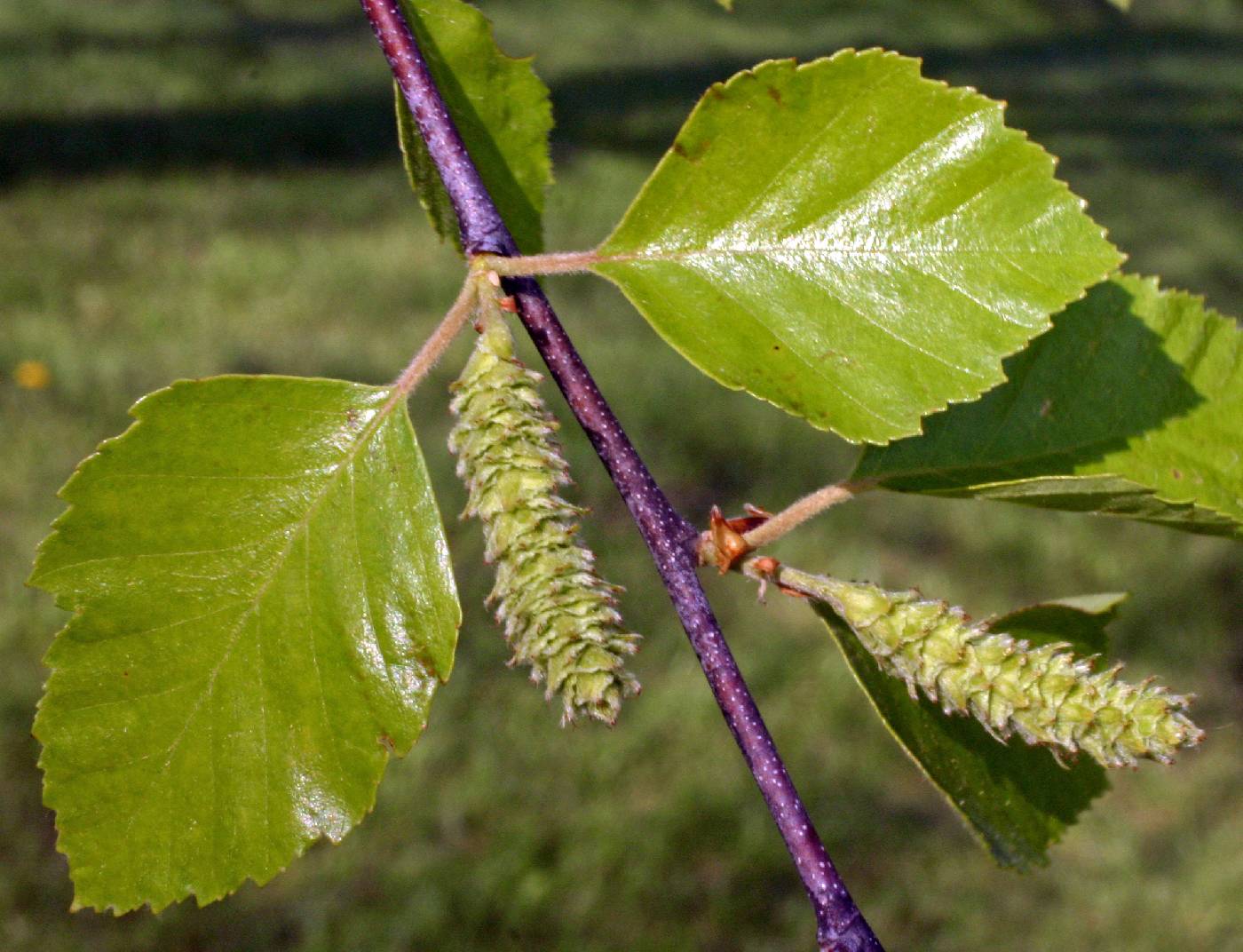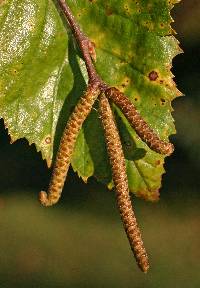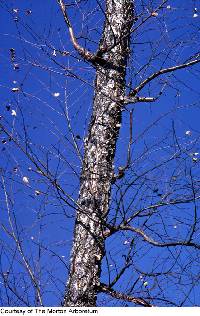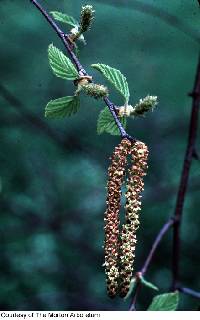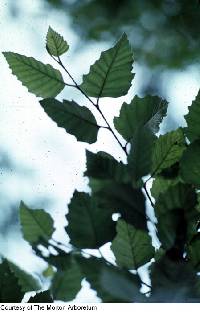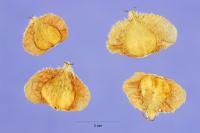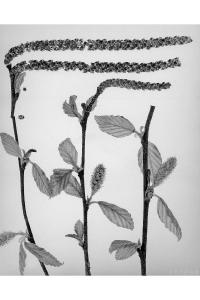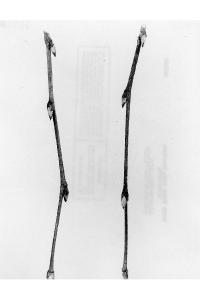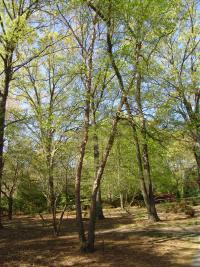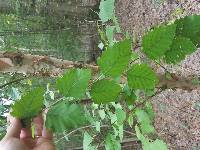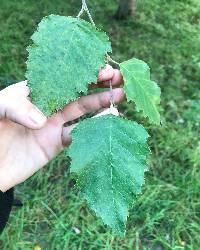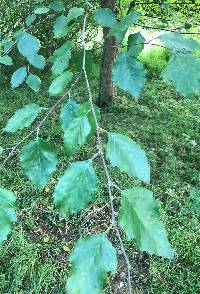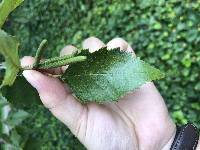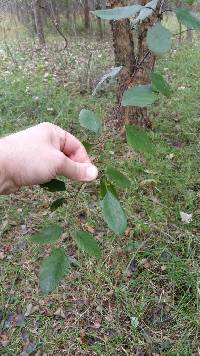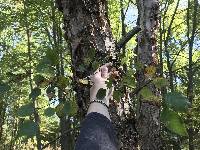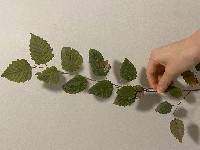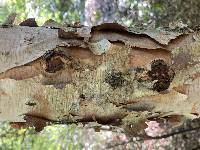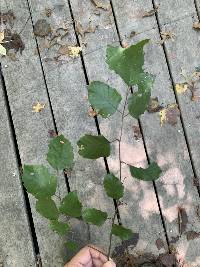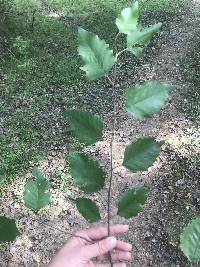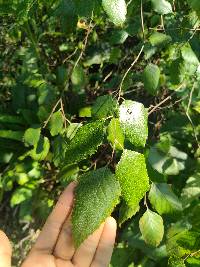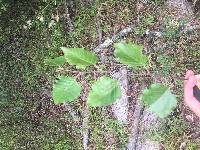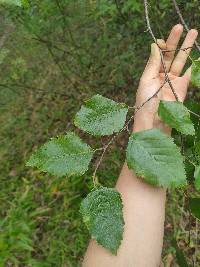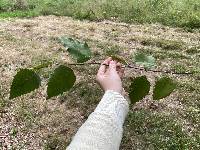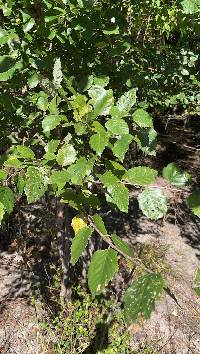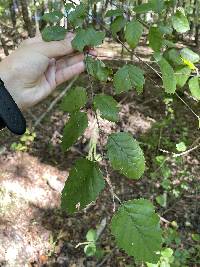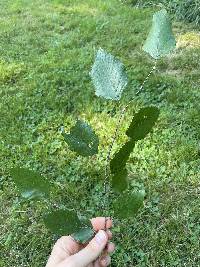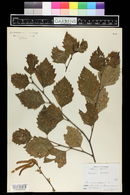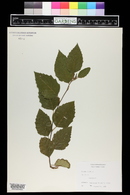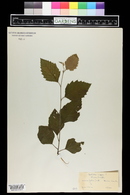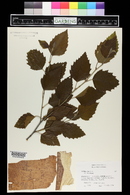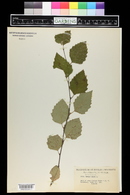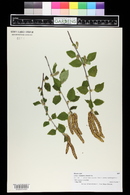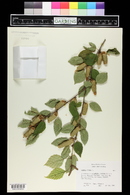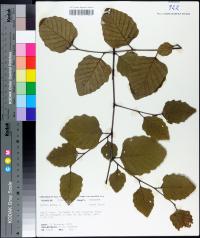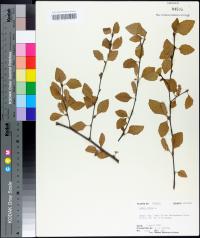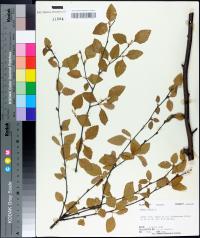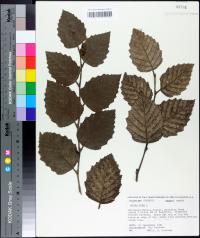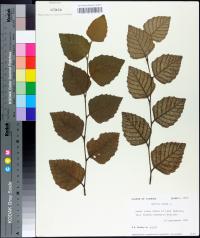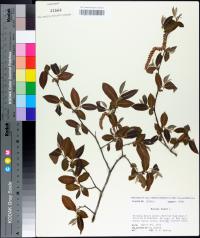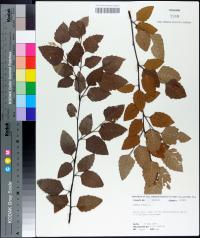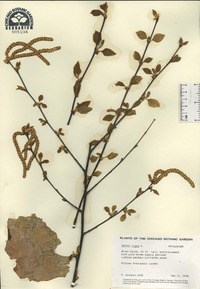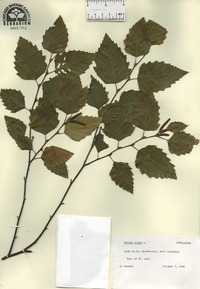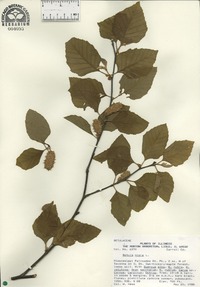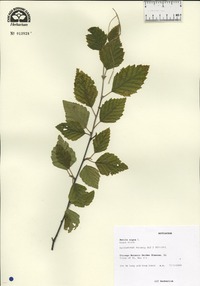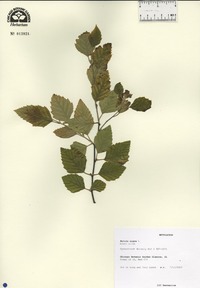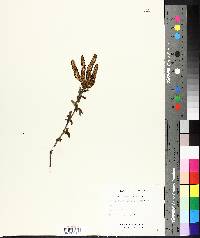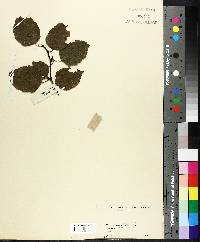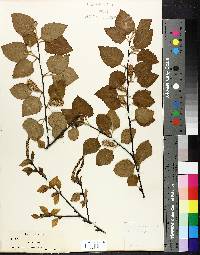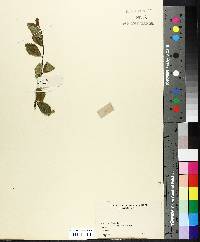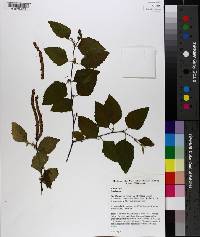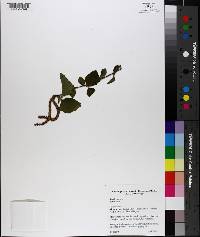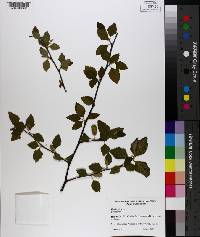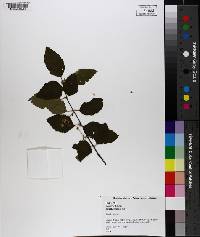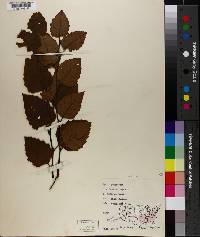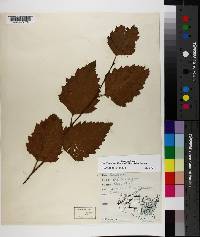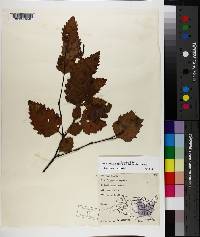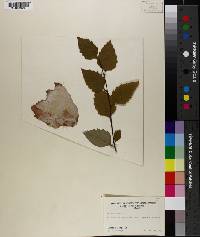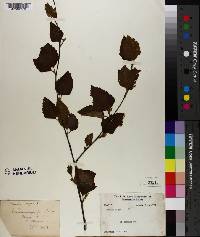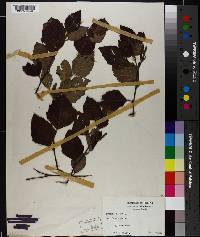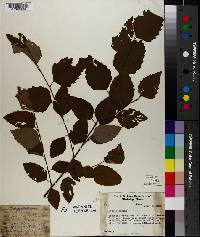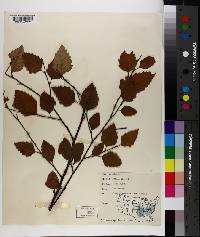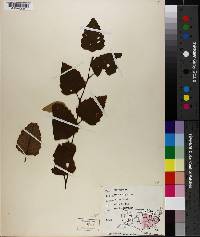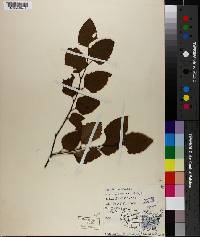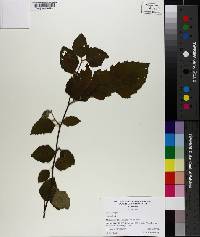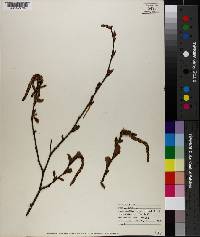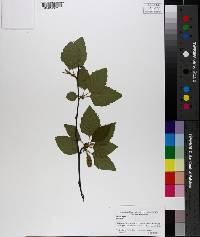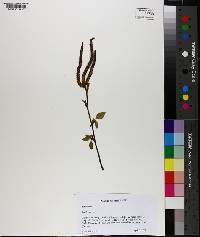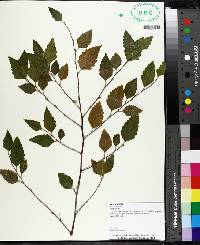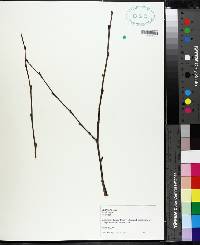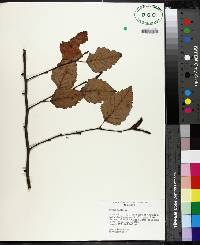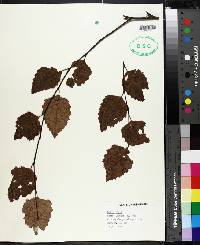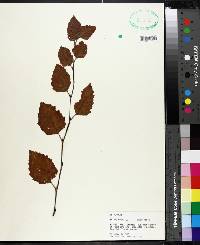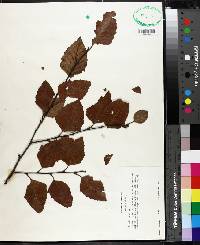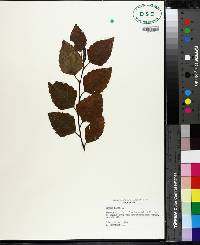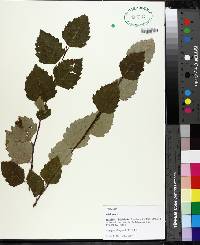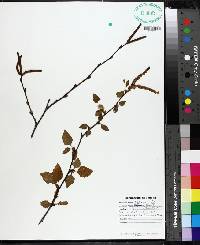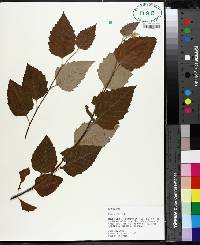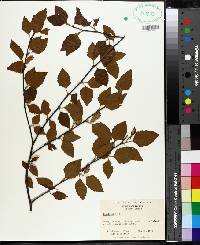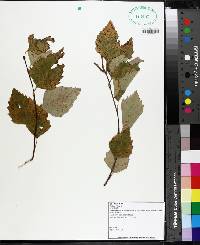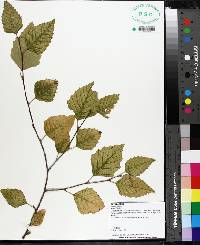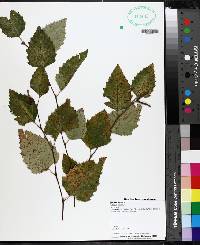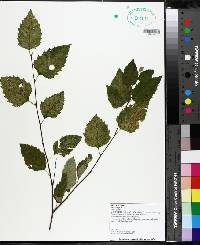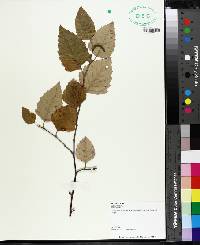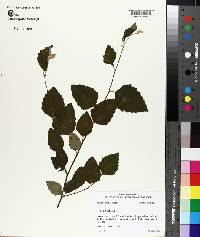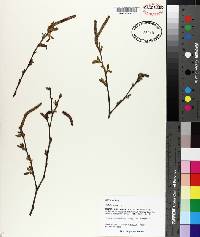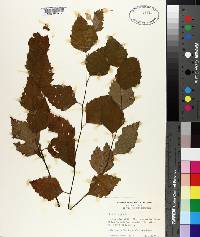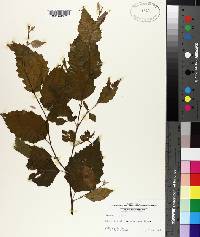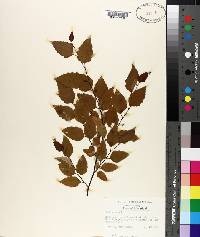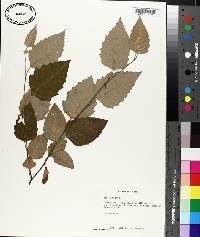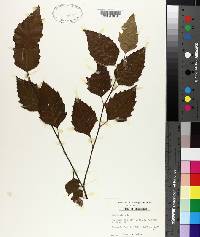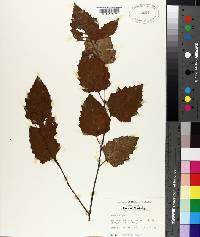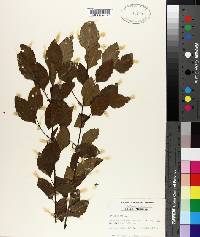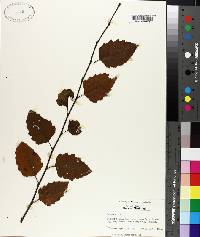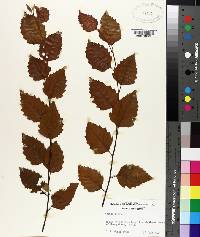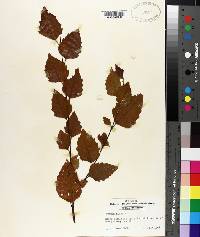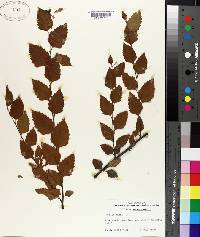
|
|
|
|
Family: Betulaceae
River Birch, more...Red Birch
[Betula rubra F.Michx.] |
Trees , to 25 m; trunks often several, crowns round. Bark of mature trunks and branches grayish brown, yellowish, reddish, or creamy white, smooth, irregularly shredding and exfoliating in shaggy sheets when mature; lenticels dark, horizontally expanded. Twigs without wintergreen taste or odor, glabrous to sparsely pubescent, often with scattered, tiny, resinous glands. Leaf blade rhombic-ovate, with 5--12 pairs of lateral veins, 4--8 × 3--6 cm, base broadly cuneate to truncate, margins coarsely doubly serrate to dentate, apex acuminate; surfaces abaxially moderately pubescent to velutinous, especially along major veins and in vein axils, often with scattered, minute, resinous glands. Infructescences erect, conic or nearly globose, 1.5--3 × 1--2.5 cm, shattering with fruits in late spring or early summer; scales often persistent into early winter, lobes 3, ascending, branching distal to middle, narrow, elongate, equal to somewhat unequal in length, apex acute. Samaras with wings narrower than body, usually broadest near summit, not extended beyond body apically. 2 n = 28. Flowering late spring. Riverbanks and flood plains, often where land is periodically inundated; 0--300 m; Ala., Ark., Conn., Del., D.C., Fla., Ga., Ill., Ind., Iowa, Kans., Ky., La., Md., Mass., Minn., Miss., Mo., N.J., N.Y., N.C., Ohio, Okla., Pa., S.C., Tenn., Tex., Vt., Va., W.Va., Wis. Betula nigra is a large and characteristic floodplain tree. Like several other species of this habitat (e.g., Acer saccharinum Marshall and Ulmus americana Linnaeus), it releases its fruits in early summer; the seeds germinate immediately (at a time when the surrounding land is unlikely to be flooded). The wood of Betula nigra is not in high demand for timber because of its generally poor quality. Cultivars with freely exfoliating bark are commonly cultivated in the Northeast and Midwest. Native Americans used Betula nigra medicinally to treat dysentery, colds, and milky urine (D. E. Moerman 1986).
Tree 10 - 18 m tall, trunk 30 - 45 cm in diameter Leaves: alternate, short-stalked, dark green above, whitish beneath, 3 - 8 cm long, 2 - 6 cm wide, four-sided to egg-shaped with a wedge-shaped to almost squared base and a pointed tip, coarsely toothed except along base, usually with seven to nine pairs of hairy veins. Fall color is yellow. Flowers: either male or female, found on the same tree (monoecious), borne in catkins. Male catkins are 2.5 - 4 mm long, hanging solitary or in small clusters. Female catkins 1 - 3 cm long, erect, cone-like, with hairy, three-lobed scales. Fruit: a seed with narrow, irregular wings on two sides (samara), borne in upright catkins 3 - 4 cm long and 1 - 1.5 cm wide. Bark: silvery gray, creamy white to light reddish brown with dark, corky horizontal lines (lenticels) when young, exfoliating in thin, curling strips to reveal pinkish tan to cinnamon inner bark, changing to dark reddish brown to gray and furrowed with age. Twigs: slender, reddish brown, shiny, hairy in first year. Terminal buds: absent. Form: pyramidal to irregular, often multi-trunked or with trunk dividing low, branches slender and arching. End and lateral buds: brown, 4 - 6 mm long, egg-shaped with a short-pointed and sometimes curved tip, hairy, especially on current year's growth. Similar species: Betula nigra has peeling, silver gray, reddish brown, pinkish tan and creamy bark on its newer growth that distinguishes it from other birches in the Chicago Region. It also has four-sided to egg-shaped leaves with pointed tips and whitish undersides. Flowering: early to mid May Habitat and ecology: Flat sandy regions on banks and floodplains of streams, and in bottomland woods. The seed disperses and establishes along silty or clayey river banks during late spring or early summer. Betula nigra is especially common along the Kankakee river. Occurence in the Chicago region: native Notes: The wood of this species is used for furniture, artificial limbs, children's toys, pulpwood, basket hoops, and turned products. This is a commonly planted ornamental tree, but suffers in high pH soil. It is more resistant to bronze birch borer than other birches planted in the landscape. Etymology: Betula is the Latin name for birch. Nigra comes from the Latin word for black. Author: The Morton Arboretum Tree to 30 m, the brown bark exfoliating in thin layers, scaly- roughened on larger trunks; lvs ovate-oblong or deltoid-ovate, 4-8 cm, acute, sharply double-serrate above, entire toward the cuneate base, tomentose beneath when young, soon glabrescent on the surface but remaining softly villous on the veins beneath and tomentose on the petiole; lateral veins 6-10 pairs; fruiting catkins on peduncles 5-8 mm, cylindric, 1.5-3 cm; scales pubescent, 6-8 mm, parted above the middle into 3 oblong lobes; frs pubescent, depressed-ovate, 3-4 נ4-7 mm, the body 2.5-4 mm wide. Swamps and flood-plain forests; N.H. to Fla., w. to s. O., se. Minn., e. Kans. and Tex. Gleason, Henry A. & Cronquist, Arthur J. 1991. Manual of vascular plants of northeastern United States and adjacent Canada. lxxv + 910 pp. ©The New York Botanical Garden. All rights reserved. Used by permission. From Flora of Indiana (1940) by Charles C. Deam More or less frequent in all the counties bordering the Kankakee River, on the south side of Cedar Lake, Lake County, on the east shore of Lake of the Woods in Marshall County, along the Tippecanoe River in White County, and more or less frequent along some of the streams of the southwestern part of the state. It is a common tree in a few places in the "flats" of Jackson and Scott Counties. ...... Indiana Coefficient of Conservatism: C = 2 Wetland Indicator Status: FACW Deam (1932): This is the most abundant birch in Indiana. In fact all other species are too rare to be of economic importance. The principal use of this wood in Indiana is for heading. All of the birches, especially the horticultural forms, are used more or less for ornamental planting. They are beautiful trees but are short lived. |
|
|
|

